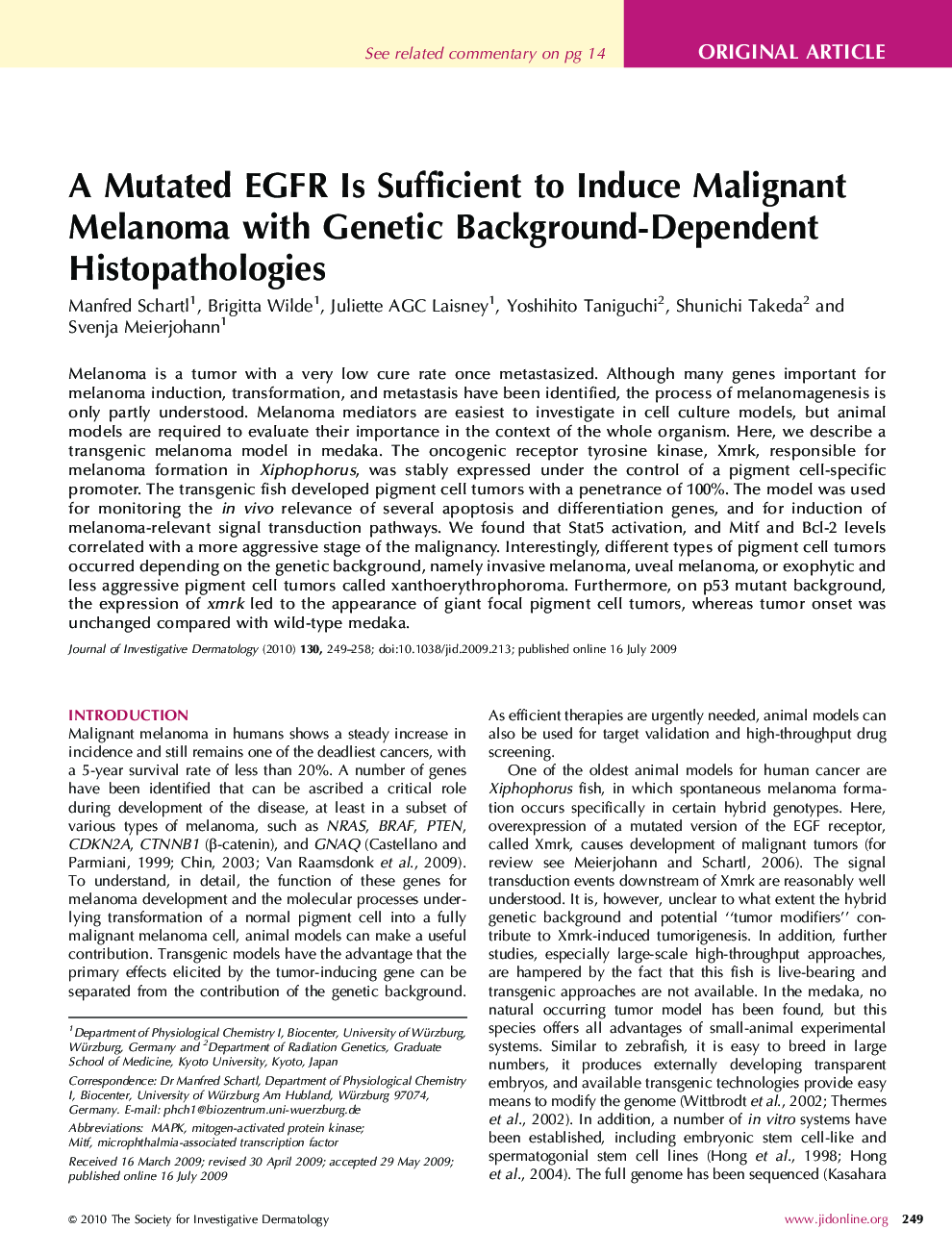| Article ID | Journal | Published Year | Pages | File Type |
|---|---|---|---|---|
| 3216270 | Journal of Investigative Dermatology | 2010 | 10 Pages |
Melanoma is a tumor with a very low cure rate once metastasized. Although many genes important for melanoma induction, transformation, and metastasis have been identified, the process of melanomagenesis is only partly understood. Melanoma mediators are easiest to investigate in cell culture models, but animal models are required to evaluate their importance in the context of the whole organism. Here, we describe a transgenic melanoma model in medaka. The oncogenic receptor tyrosine kinase, Xmrk, responsible for melanoma formation in Xiphophorus, was stably expressed under the control of a pigment cell-specific promoter. The transgenic fish developed pigment cell tumors with a penetrance of 100%. The model was used for monitoring the in vivo relevance of several apoptosis and differentiation genes, and for induction of melanoma-relevant signal transduction pathways. We found that Stat5 activation, and Mitf and Bcl-2 levels correlated with a more aggressive stage of the malignancy. Interestingly, different types of pigment cell tumors occurred depending on the genetic background, namely invasive melanoma, uveal melanoma, or exophytic and less aggressive pigment cell tumors called xanthoerythrophoroma. Furthermore, on p53 mutant background, the expression of xmrk led to the appearance of giant focal pigment cell tumors, whereas tumor onset was unchanged compared with wild-type medaka.
